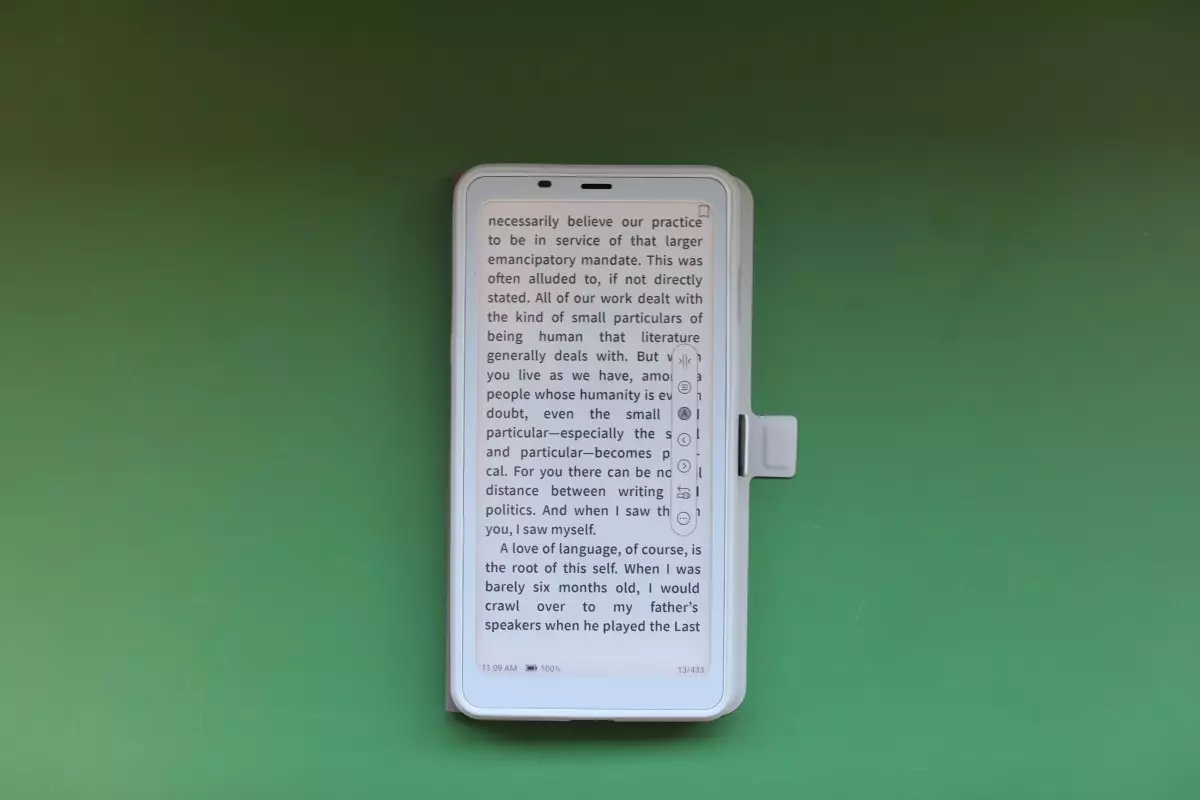In today’s technology-saturated world, the need for devices that promote focus and reduce distractions has become increasingly apparent. One such device trying to navigate this space is the Palma, an e-reader that aspires to be more than just a simple reading tool. The Palma seeks to offer a reprieve from the distractions typically found on smartphones, yet it grapples with its own identity and usefulness amid the myriad of options available to consumers.
The Digital Dilemma: Focus Versus Functionality
Boox, the company behind the Palma, markets it as a “distraction-free device” positioned to help users reclaim their focus. This ambition resonates with many, especially in an era defined by social media’s persistent pull on our attention. However, the distinction between what constitutes a distraction versus an essential feature can vary significantly from person to person. Take, for example, the Light Phone, which deliberately launched with limited capabilities. While its simplicity was initially appealing, the subsequent addition of features deemed “nonessential” has left some users questioning the device’s core purpose.
The Palma, conversely, approaches the challenge of distraction and functionality from a slightly different angle. Although equipped with Android and the capacity to access the Google Play Store, it retains limitations inherent to its ePaper display. This technology excels in reading but lacks the versatility of conventional screens, confining it primarily to that role. As a result, users may find the device both intriguing and frustrating as they grapples with its capabilities.
The Palma’s hardware includes an octa-core processor, speakers, a camera, and Bluetooth connectivity, presenting a range of possible functions. Yet, the device’s design philosophy seems conflicted. While it embraces e-reader features—such as an easy-on-the-eyes display and extended battery life—it also houses functionalities that many might consider superfluous for a gadget primarily aimed at reading.
Offering a camera or Bluetooth may seem appealing on the surface, but these features appear to dilute the Palma’s core identity. An attempt to mesh the functionality of devices like smartphones leads to a sense of technological disarray. Users might appreciate the expanded capabilities, yet may also find themselves perplexed as to the Palma’s primary function. In an age of all-in-one devices, it may be more prudent for Boox to reconsider its approach, critically evaluating which features genuinely enhance user experience without muddling the device’s purpose.
Intriguingly, the Palma has spawned discussions among its users regarding creative ways to maximize the device’s limited ecosystem. Forums have sprung up exploring how to make the Palma function better as a phone-like device, given its lack of traditional calling features due to the absence of a SIM slot. Many users have brainstormed solutions, such as using apps like WhatsApp to enable voice calls. This resourcefulness reflects the dedication of some users to make the Palma fit their needs, although it underscores the potential frustrations inherent in the device’s design limitations.
Despite these shortcomings, the Palma’s user base may find it easier to embrace the product primarily as an e-reader. Those who prioritize reading can appreciate the advantages that come from the ePaper technology and the lightweight design. The ease on the eyes, conducive to late-night reading without disrupting sleep patterns, establishes the Palma as a legitimate alternative to traditional e-readers.
At a price point of $280, the Palma faces scrutiny in terms of its overall value. Consumers frequently weigh the benefits of advanced features against their practicality and necessity. While the Palma boasts impressive Amazon-like reading capabilities, the question remains—are the additional features worth the cost? For those only interested in reading, it may not make financial sense to invest in an e-reader that leans towards multifunctionality.
Given the experiences of e-reader users, a streamlined version of the Palma with a strong focus on reading capabilities and a lower price tag could revolutionize its appeal. By targeting literary consumers and enhancing core e-reading features, Boox has the potential to carve out a significant niche in the market.
The Palma presents a fascinating, albeit complicated, case study in the intersection of technology and user experience. Its attempt to combine functionality and distraction-free reading reflects broader trends in consumer electronics, but a more refined approach could enhance usability and market appeal. Ultimately, as readers continue to seek devices that balance function with focus, the Palma must carefully consider its evolution to thrive in this dynamic landscape.

